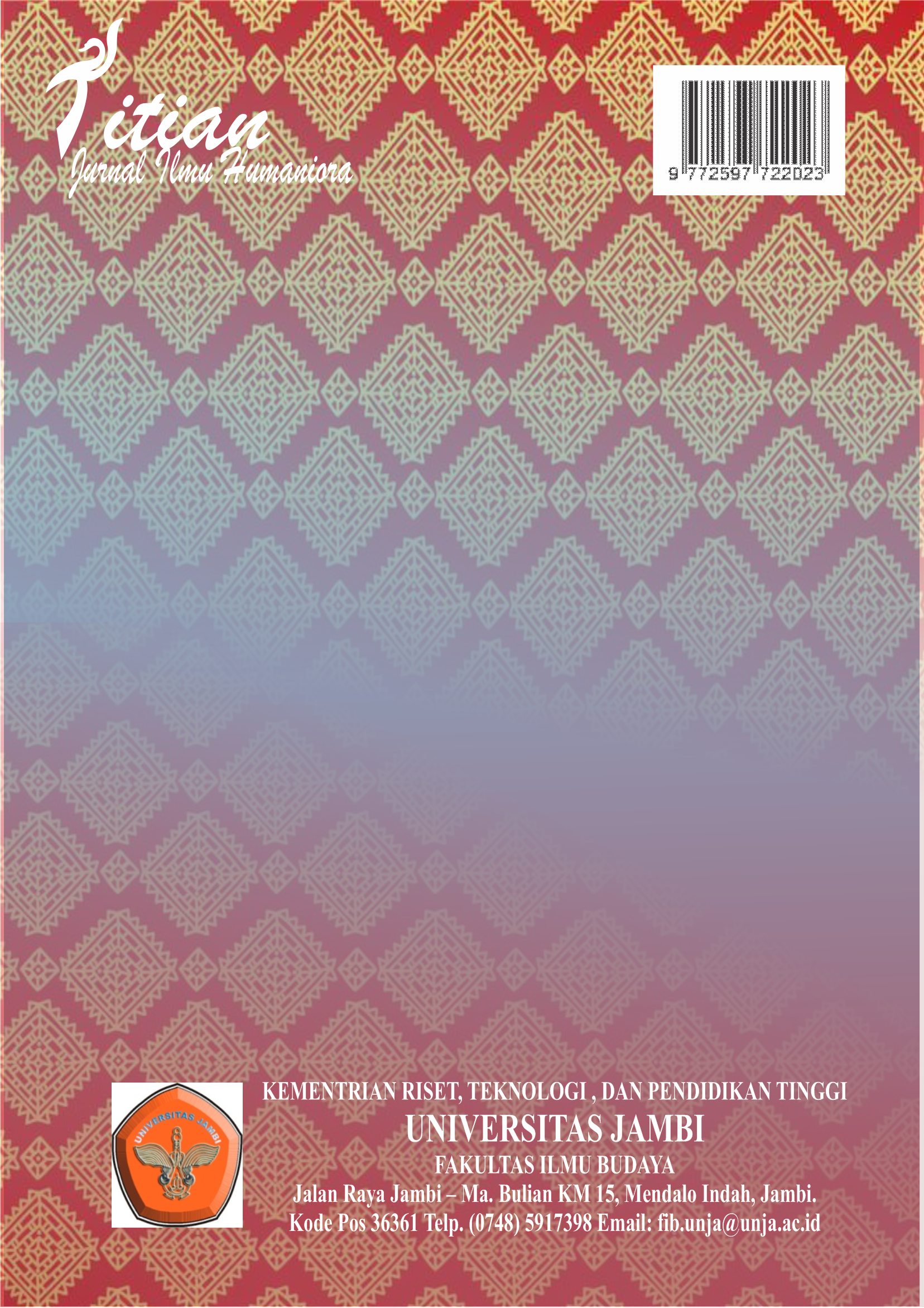Referent Langsung, Tak Langsung, Gaib, dan Plesetan (Kajian Pengembangan Teori Ferdinand De Saussure)
DOI:
https://doi.org/10.22437/titian.v5i2.15700Keywords:
direct referent, indirect, supernatural, referent playAbstract
Referent or reference to the meaning of a word is hardly discussed in detail by linguists after Ferdinand de Saussure. The reason is because the meaning of the word is very dynamic or raises the possibility of various meanings. Another reason, there are referents who are not in the real world but in the shadow or fantasy. Therefore, this study is a form of developing reference theory into direct, indirect, occult, and play referent referents. The analytical method used in this study is a qualitative descriptive method. Meanwhile, the collection technique used is a documentation study, which is collecting writings related to the object of research, namely word studies as one of the elements in the linguistic field, followed by reading techniques. Reading is done to: (1) understand the overall content of the data sources used in this study; (2) sharpen previous understanding; (3) understand the focus of the research, namely the word described by linguist Ferdenand de Saussure. Data analysis techniques in this study include: (1) data reduction as a selection process, focusing attention on simplification, abstracting, and transformation of rough data, obtained from various written records. Reports or data obtained are stated in the form of a complete and detailed description of the referent as one element of the meaning of the word.
Downloads
References
Chaer, Abdul. (1990). Pengantar Semantik Bahasa Indonesia. Jakarta: Rineka Cipta.
Chaer, Abdul. (2003). Linguistik Umum. Jakarta:Rineka Cipta.
Chaer, Abdul. (2006). Tata Bahasa Praktis Bahasa Indonesia. Jakarta: Rineka Cipta.
Djajasudarma, Fatimah. (2009). Semantik I Makna Leksikal dan gramatikal. Bandung: Rafika Aditama.
Daud Rodi Palimbong (2013). Kajian Wujud Makna Referensial dalam Kompas Edisi November 2012. Jurnal AgroSainT UKI Toraja.Vol.IV.No.3, 649-654.
Gani, Saida dan Arsad, Berti. (2018). Kajian Teori Struktur Internal Bahasa (Fonologi, Morfologi, Sintaksis, dan Semantik). Jurnal Bahasa dan Sastra Arab. Vol.07, No. 1, 1-20
Hidayat, F. Amir, Elis N. dan Rahmani AR. (2006). Ensiklopedi Bahasa-Bahasa Dunia Peristilahan dalam Bahasa. Bandung: CV. Pustaka Grafika.
Idrus, Ahmad. (2020). Proklitik dan Pos Posisi Bahasa makean Timur Telaah Deskriptif. Jurnal Koherensi: Jurnal Ilmiah Pendidikan Bahasa dan Sastra Indonesia. Vol. 1 No.1 45-51.
Pateda, Mansur. (2001). Semantik Leksikal. Jakarta: PT. Rineka Cipta.
Reski Kurniawan, dkk. (2018). Analisis Makna Referensial Pada Rubrik Pendidikan Dalam Surat Kabar Jambi Ekspres Edisi Bulan Maret 2017. Aksara: Jurnal Ilmiah Pendidikan Bahasa dan Sastra Indonesia. Vol. 1 No. 2. 192-200
Shipley, Joseph T. (1962). Dictionary of World Literature. New York: Littlefield, Adams and Co.
Ullmann, Stephen. (1972). Semantics an Introduction to the Science of Meaning. Oxford: Basil Balckwell.
Downloads
Published
How to Cite
Issue
Section
License
Copyright (c) 2021 Idrus Ahmad

This work is licensed under a Creative Commons Attribution-ShareAlike 4.0 International License.































